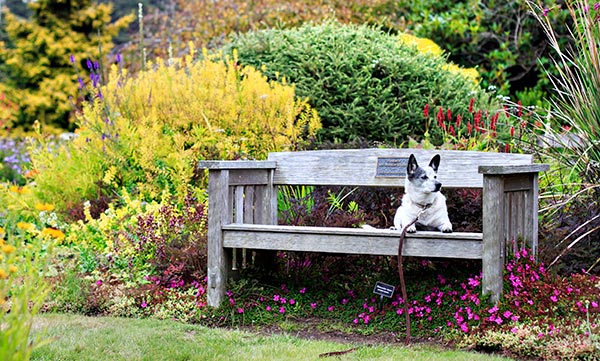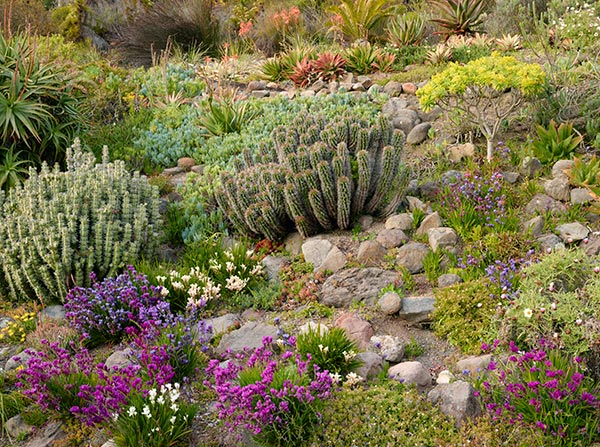Pat's Garden Travels: Beautiful botanical gardens

This issue, Pat shares two of her favorite botanical gardens.
Mendocino Coast Botanical Gardens
18220 North Highway 1, Fort Bragg
707-964-4352

Photo courtesy of Mendocino Coast Botanical Gardens/Roxanne Perkins
The first time I visited the Mendocino Coast Botanical Gardens, a climbing rose in full bloom draped across the entrance, and its branches were cascading down just enough to catch visitors. The fragrance was heady and powerful. I wanted that rose!
My husband and I spent the day wandering through the garden, just moseying among the rhododendrons and camellias and dahlias and roses. We explored little paths, found a cute vegetable garden and marveled at the magnolias. There were plenty of benches for sitting and staring at the garden, and a couple times we had to share a bench with a resident cat. Our presence didn't disturb his nap.
The 47-acre garden offers ample opportunities for walking, with paths leading through themed gardens and collections. The garden's main trails are wheelchair accessible and open onto the coastal bluffs, offering spectacular ocean views and whale watching. With a wide variety of plantings, this garden is lovely year-round.
Whenever we travel north on Highway 1 from our Sacramento-area home, we try to take time to walk through the gardens to see what's new and enjoy the familiar sights as well.
University of California Botanical Garden at Berkeley
200 Centennial Drive, Berkeley

Photo courtesy of University of California Botanical Garden at Berkeley
The road to the UC Botanical Garden climbs out of Berkeley past the campus, past the dorms. It's an easy drive, and one of the nicest things about the garden is you can park without a lot of fuss. That doesn't happen in the Bay Area very often.
The garden isn't as large as some, at 34 acres, but it feels huge, and it seems I can walk and walk and never see the same things too many times in a row. There are more than 10,000 types of plants, many of them rare or endangered. Most are plants that thrive in the USDA Zone 9 climate that dominates much of our state. The collection of plants comes from around the world, with an emphasis on Mediterranean climates: California, the Mediterranean Basin, Australia, South Africa and Chile, and the arrangement of plants is generally geographic.
The garden was established in 1850, and at first was a collection of native trees, shrubs and herbaceous plants. Preserving plants precious to California has always been a goal. As the campus grew, the garden was forced to move in 1925 to its current location in Strawberry Canyon. Today, it's one of the largest and most diverse collections in the country.

